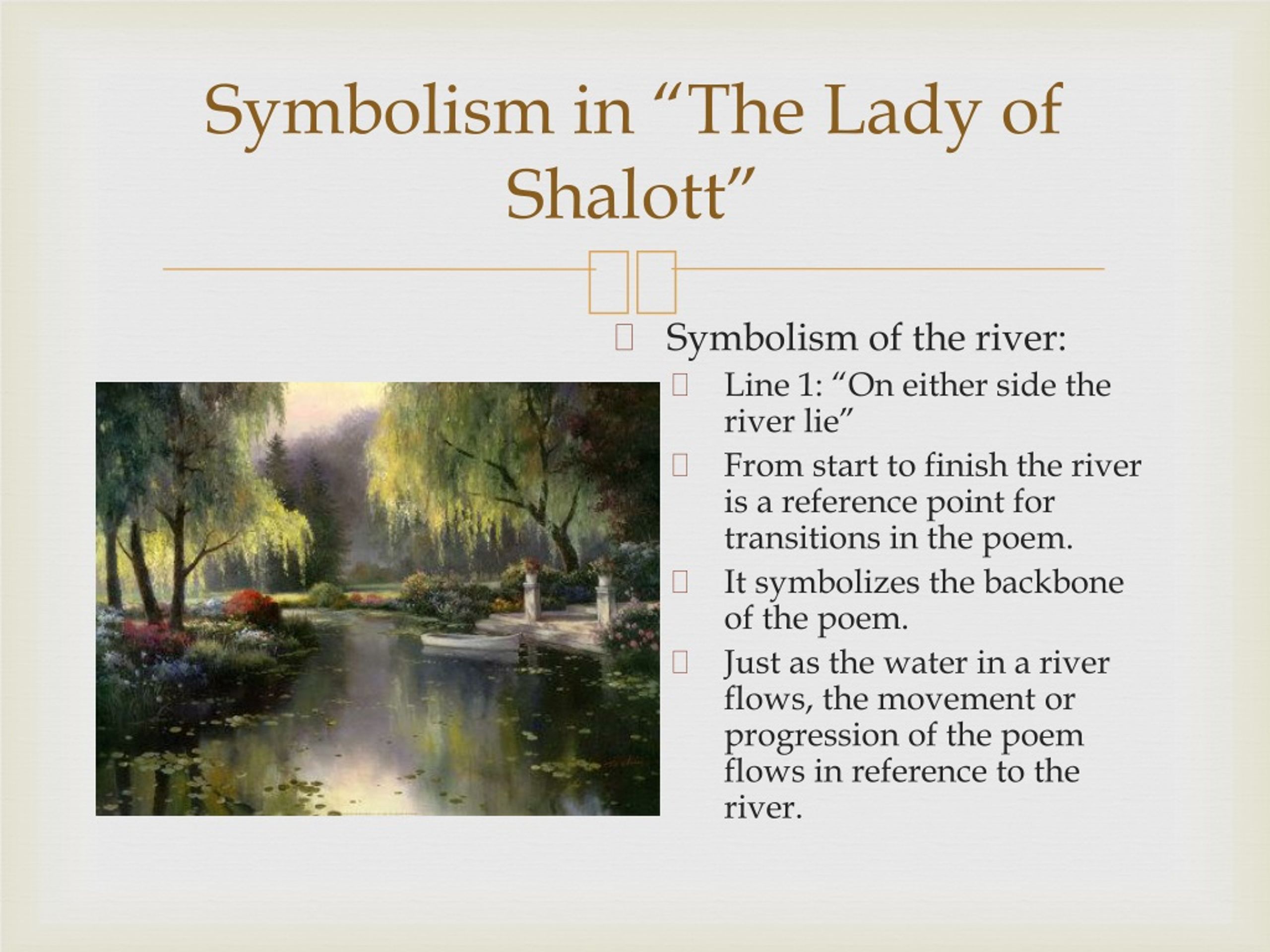

įeminist critics see the poem as concerned with issues of women's sexuality and their place in the Victorian world, arguing that "The Lady of Shalott" centres on the temptation of sexuality and her innocence preserved by death. One of Tennyson's biographers found the Arthurian material is "introduced as a valid setting for the study of the artist and the dangers of personal isolation". The Lady of Shalott by Walter Crane, 1862

The Lady of Shalott lives in an island castle in a river which flows to Camelot, but the local farmers know little about her. The first four stanzas of the 1842 second version of the poem describe a pastoral setting. Tennyson focused on the Lady's "isolation in the tower and her decision to participate in the living world, two subjects not even mentioned in Donna di Scalotta." Tennyson also wrote "Lancelot and Elaine", a poem based on Thomas Malory's version of the story from Le Morte d'Arthur, which he included in his Idylls of the King.

LXXXII in the collection Il Novellino: Le ciento novelle antike) the earlier version is closer to the source material than the latter. It is inspired by the legend of Elaine of Astolat, as recounted in a 13th-century Italian novellina titled La Damigella di Scalot, or Donna di Scalotta (No. Like Tennyson's other early works, such as " Sir Galahad", the poem recasts Arthurian subject matter loosely based on medieval sources. The vivid medieval romanticism and enigmatic symbolism of "The Lady of Shalott" inspired many painters, especially the Pre-Raphaelites and their followers, as well as other authors and artists. Tennyson wrote two versions of the poem, one published in 1832 (in Poems, incorrectly dated 1833), of 20 stanzas, the other in 1842, of 19 stanzas (also in a book named Poems), and returned to the story in "Lancelot and Elaine". Inspired by the 13th-century Italian short prose text Donna di Scalotta, the poem tells the tragic story of Elaine of Astolat, a young noblewoman stranded in a tower up the river from Camelot. " The Lady of Shalott" is a lyrical ballad by the 19th-century English poet Alfred Tennyson and one of his best-known works. Iambic tetrameter with isolated lines in iambic trimeter


 0 kommentar(er)
0 kommentar(er)
